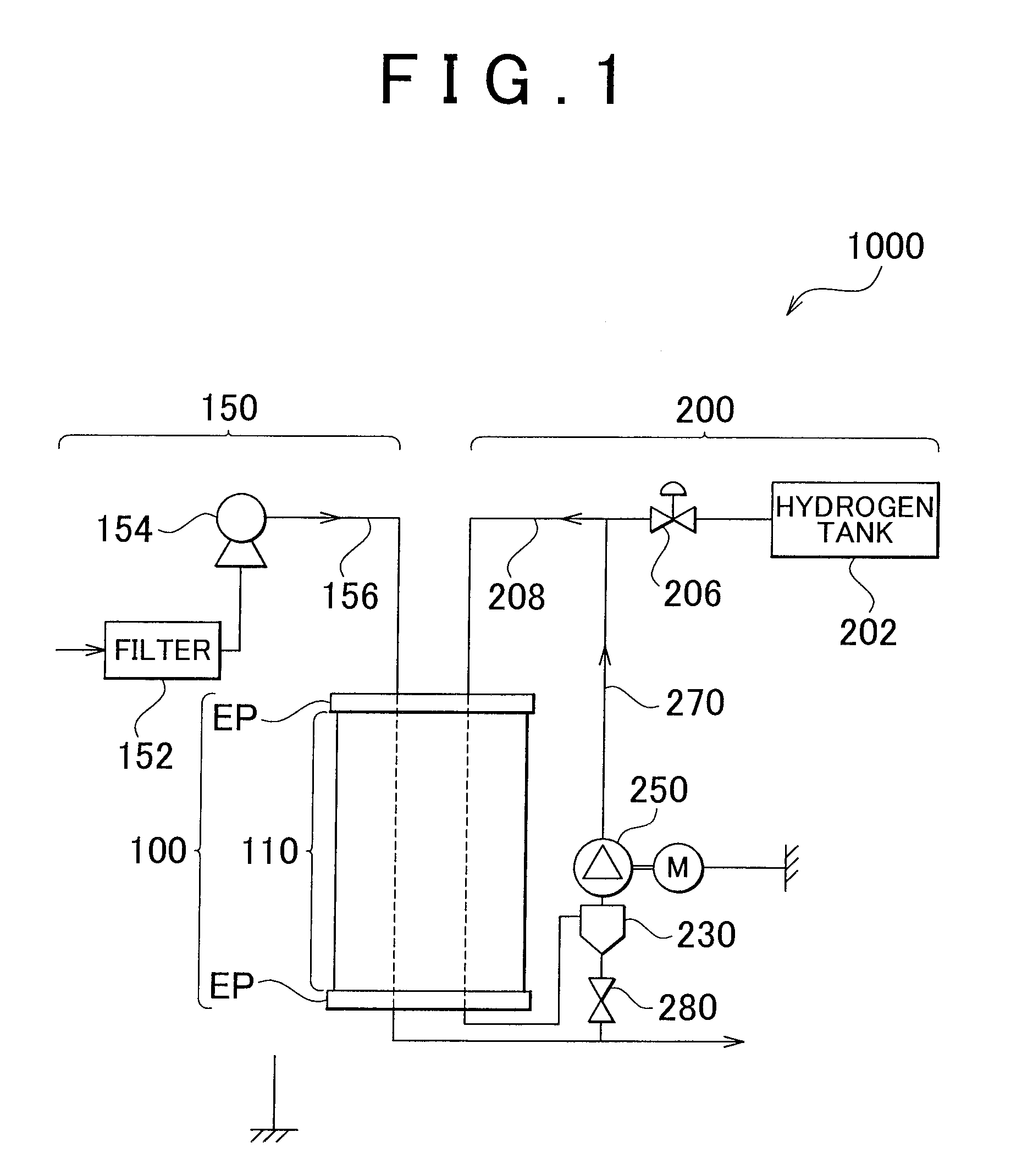Fuel cell system
a fuel cell and system technology, applied in the field of fuel cell systems, can solve problems such as shortening the fuel cell stack
- Summary
- Abstract
- Description
- Claims
- Application Information
AI Technical Summary
Benefits of technology
Problems solved by technology
Method used
Image
Examples
first example embodiment
A. First Example Embodiment
[0043]FIG. 1 is a view schematically showing the structure of a fuel cell system as a first example embodiment of the invention. The fuel cell system 1000 is a system that generates electricity using an electrochemical reaction between hydrogen and oxygen, and includes a fuel cell stack 100, an air supply system 150, and a fuel supply system 200. Incidentally, in this example embodiment, the fuel cell system 1000 for a fuel cell vehicle is used as an example, but the invention may also be applied to another fuel cell system such as a fixed fuel cell system.
[0044]The fuel cell stack 100 is formed by a stacked body 110 formed by a plurality of cells, not shown, that are stacked together, and two end plates EP that sandwich the stacked body 110. Each of the cells is formed by a separator, a fuel electrode (hereinafter referred to as an “anode”), an electrolyte membrane, an air electrode (hereinafter referred to as a “cathode”), and another separator stacked t...
second example embodiment
B. Second Example Embodiment
[0062]FIG. 5 is an enlarged view of the location where a gas-liquid separating device 230B and the hydrogen circulating pump 250 are connected together according to a second example embodiment of the invention. The only difference between the second example embodiment and the first example embodiment shown in FIG. 3A is that a mesh member 310 is arranged in the passageway of the passage portion 234, instead of having the protruding portion 240 formed on the passage portion 234 of the gas-liquid separating device 230B. Other than this, the structure is the same as it is in the first example embodiment. Incidentally, in this example embodiment, the mesh member 310 is fixed to the inside wall of the passage portion 234 by welding, but it may also be fixed to the passage portion 234 by fitting together with the passage portion 234.
[0063]The mesh member 310 has a mesh structure and may be made of resin such as nylon, or rubber or the like. The mesh structure o...
PUM
 Login to View More
Login to View More Abstract
Description
Claims
Application Information
 Login to View More
Login to View More - R&D
- Intellectual Property
- Life Sciences
- Materials
- Tech Scout
- Unparalleled Data Quality
- Higher Quality Content
- 60% Fewer Hallucinations
Browse by: Latest US Patents, China's latest patents, Technical Efficacy Thesaurus, Application Domain, Technology Topic, Popular Technical Reports.
© 2025 PatSnap. All rights reserved.Legal|Privacy policy|Modern Slavery Act Transparency Statement|Sitemap|About US| Contact US: help@patsnap.com



